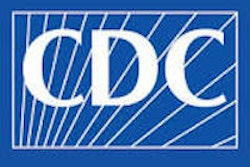
Economically disadvantaged children in the U.S. received more preventive dental care but less overall treatment in 2013, according to a new report by the Department of Health and Human Services (HHS) on children enrolled in Medicaid and the Children's Health Insurance Program (CHIP).
Medicaid and CHIP play a key role in ensuring that low-income children get healthcare coverage and access to a comprehensive set of benefits and other medically necessary services. Together, the programs served more than 45 million children in 2013, representing more than 1 in 3 U.S. children. All children enrolled in Medicaid and CHIP have coverage for dental and oral health services.
“Despite considerable progress in pediatric oral healthcare in recent years, tooth decay remains one of the most common chronic diseases among children.”
"Despite considerable progress in pediatric oral healthcare in recent years, dental caries remains one of the most common chronic diseases of children," noted the report, titled "2014 Annual Report on the Quality of Care for Children in Medicaid and CHIP." And caries is a growing problem: Among children ages 2 to 5, the prevalence of early childhood caries increased 15% between 1988 to 1994 and 1999 to 2004. Untreated caries now affects 19.5% of 2- to 5-year-olds and 23% of 6- to 9-year-olds, according to the report.
Over the past several years, the Centers for Medicare and Medicaid Services (CMS) has worked with federal and state partners, the dental and medical provider communities, and other stakeholders to continue to improve children's access to dental care, the report stated. Launched in 2010, CMS's Oral Health Initiative has two goals: a 10% increase in the number of children in the Medicaid and CHIP programs who receive a preventive dental service, and a 10% increase in the number of young children (ages 6 to 9) who get sealants on permanent molars.
In 2013, CMS set state-specific baselines and goals for 2015 for children's use of preventive dental services.
More preventive dental care but less dental treatment
Some 48% of children ages 1 to 20 received at least one preventive dental service (such as application of topical fluoride or dental sealants), and about 23% of them received at least one dental treatment (such as dental restorations) in 2013, according to the report. The rate for preventive dental services increased from 45% to 48%, compared with 2011, but the rate for dental treatment services decreased slightly from 24% to 23% in the same period.
Children in low-income families (incomes below 100% of the federal poverty level) had higher rates of untreated caries than children from higher-income families.
State efforts
States' efforts over the past decade have resulted in improved access to dental care for children covered by Medicaid and CHIP. Between 2007 and 2011, almost half of all states achieved at least a 10% increase in the proportion of enrolled children who received a preventive dental service during the year. Between 2011 and 2012, 15 states achieved at least an additional 2% improvement.
The report detailed New Jersey's efforts. That state required all four of its managed care organizations (MCO) to implement a performance improvement project aimed at promoting dental care for children. Two of New Jersey's four MCOs achieved notable improvements in utilization of dental care through this project: one achieved a steady statistically significant increase over three years in the rate of annual dental visits for children ages 1 to 2 years, and the other increased the rate of dental visits for children ages 2 to 3 years by 27.9%.
These projects used both member and provider interventions, including the following:
- Member education on good oral hygiene through letters, telephone calls, newsletters, and websites
- Small monetary incentive for members who completed a dental visit
- Distribution of a pediatric dentist directory
- Fluoride varnish incentive program for primary care physicians (PCPs) who referred members to dentists, with an additional incentive once a dental visit was completed
- PCP education on guidelines and best practices
- Encouraging PCPs to apply fluoride varnish for children with early childhood caries through training and reimbursement for this service



















